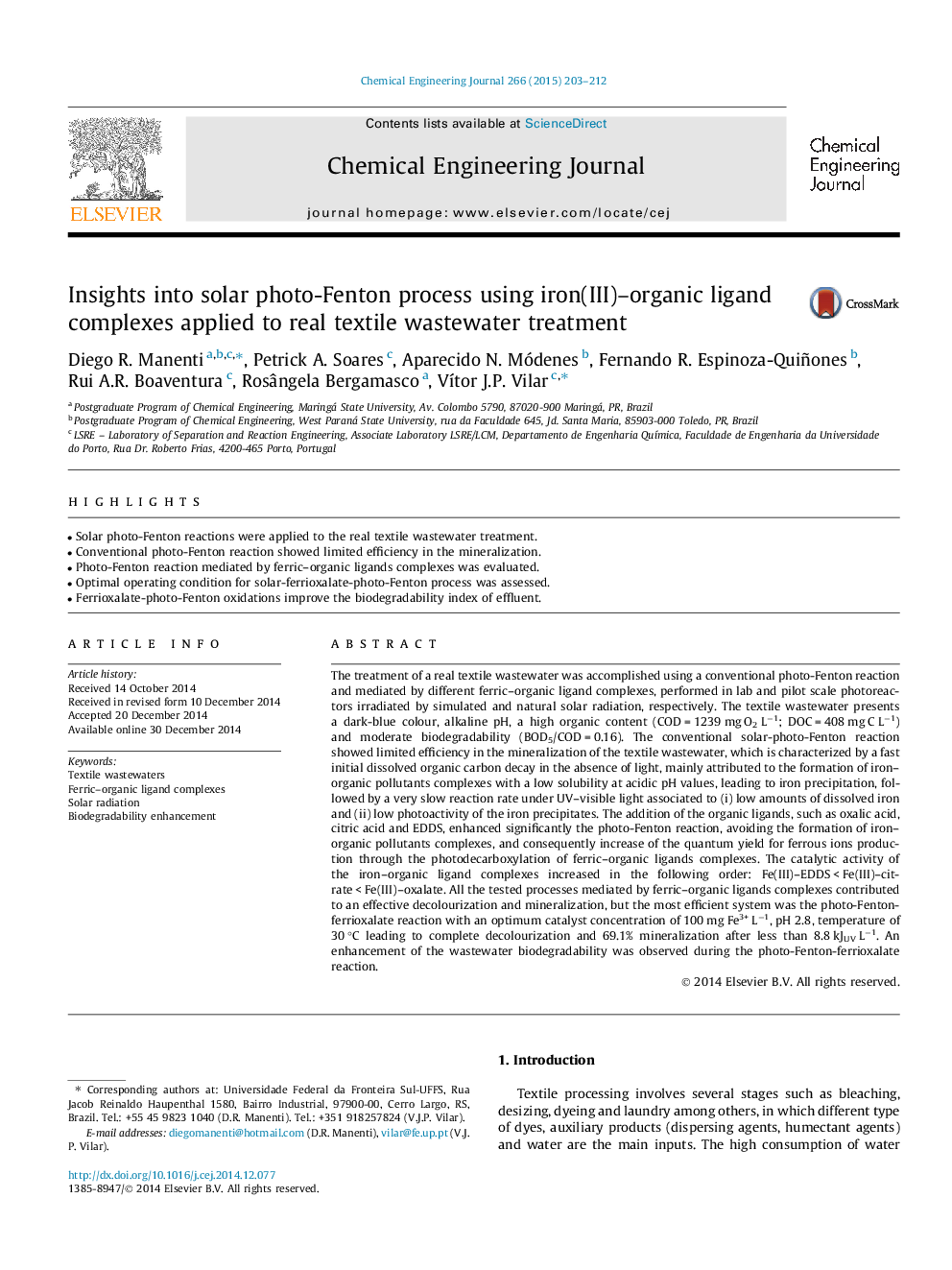| Article ID | Journal | Published Year | Pages | File Type |
|---|---|---|---|---|
| 6585132 | Chemical Engineering Journal | 2015 | 10 Pages |
Abstract
The treatment of a real textile wastewater was accomplished using a conventional photo-Fenton reaction and mediated by different ferric-organic ligand complexes, performed in lab and pilot scale photoreactors irradiated by simulated and natural solar radiation, respectively. The textile wastewater presents a dark-blue colour, alkaline pH, a high organic content (COD = 1239 mg O2 Lâ1; DOC = 408 mg C Lâ1) and moderate biodegradability (BOD5/COD = 0.16). The conventional solar-photo-Fenton reaction showed limited efficiency in the mineralization of the textile wastewater, which is characterized by a fast initial dissolved organic carbon decay in the absence of light, mainly attributed to the formation of iron-organic pollutants complexes with a low solubility at acidic pH values, leading to iron precipitation, followed by a very slow reaction rate under UV-visible light associated to (i) low amounts of dissolved iron and (ii) low photoactivity of the iron precipitates. The addition of the organic ligands, such as oxalic acid, citric acid and EDDS, enhanced significantly the photo-Fenton reaction, avoiding the formation of iron-organic pollutants complexes, and consequently increase of the quantum yield for ferrous ions production through the photodecarboxylation of ferric-organic ligands complexes. The catalytic activity of the iron-organic ligand complexes increased in the following order: Fe(III)-EDDS < Fe(III)-citrate < Fe(III)-oxalate. All the tested processes mediated by ferric-organic ligands complexes contributed to an effective decolourization and mineralization, but the most efficient system was the photo-Fenton-ferrioxalate reaction with an optimum catalyst concentration of 100 mg Fe3+ Lâ1, pH 2.8, temperature of 30 °C leading to complete decolourization and 69.1% mineralization after less than 8.8 kJUV Lâ1. An enhancement of the wastewater biodegradability was observed during the photo-Fenton-ferrioxalate reaction.
Related Topics
Physical Sciences and Engineering
Chemical Engineering
Chemical Engineering (General)
Authors
Diego R. Manenti, Petrick A. Soares, Aparecido N. Módenes, Fernando R. Espinoza-Quiñones, Rui A.R. Boaventura, Rosângela Bergamasco, VÃtor J.P. Vilar,
